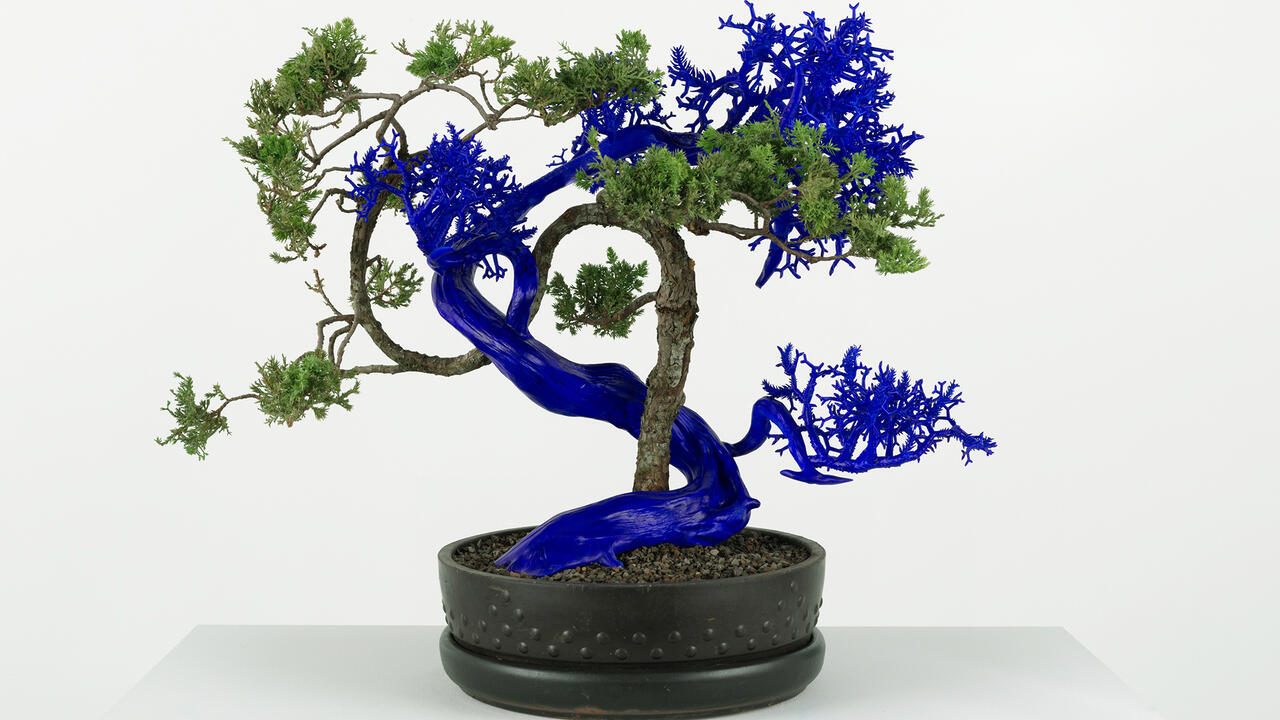Tino Sehgal
Solomon R. Guggenheim Museum, New York, USA
Solomon R. Guggenheim Museum, New York, USA
The Museum of Modern Art in New York’s acquisition of Tino Sehgal’s Kiss (2004) was described by museum director Glenn D. Lowry as ‘one of the most elaborate and difficult acquisitions we’ve ever made.’ Because Sehgal forbids the production of material documentation in relation to his work, the sale was conducted orally, in the presence of a lawyer and public notary. The work and price were verbally described, as well as certain key restrictions, including a ban on any future documentation.
The process, as related in a recent New York Times article, was laborious, obscure and also gleefully bureaucratic – a scenario that has as much to do with the logic of Franz Kafka as the tenets of relational aesthetics. It encapsulates one of the chief pleasures of Sehgal’s work: while he is often described as mounting an institutional critique, the artist also likes to harness the irregular reasoning and jouissance of the institution. For this reason, the Guggenheim’s rotunda – a work of architecture that is both monolithically unique yet institutional in feel – was the natural home for a presentation by Sehgal.
The form of This Progress (2006) found its material equivalent in the rotunda’s ramp: groups and individuals were ferried up the spiral, accompanied by Sehgal’s army of trained ‘interpreters’. At the base of the ramp, a child approached visitors and asked them to define progress; a young adult continued the conversation, and so on until visitors were at the top of the spiral, talking with an elderly performer. The total effect was exhilarating and amplified the exuberance that characterizes Sehgal’s work as a whole (peopled as it is with dancing gallery attendants, kissing couples and the like). As gallery visitors were passed from one performer to the next, carrying out a daisy-chain conversation on the topic of progress, multiple forms of progress – spatial, temporal, philosophical and mortal – were schematically laid out.
The factory-line quality of the work was difficult to ignore (according to one of the performers, some 60 individuals had been hired for each of the four ages represented in the work). And while previous executions of This Progress have tended to be more intimate, with seamless hand-overs taking place between performers, at the Guggenheim any experience of the work was necessarily accompanied by the cacophony of all the other versions of This Progress simultaneously taking place.
But presenting the work on this scale had its own odd, triumphant effect. The scene inside the Guggenheim was not unlike something out of Terry Gilliam’s Brazil (1985) – another brilliant inquiry into the often childlike exuberance of the institution and its bureaucracy. The assembly-line efficiency of This Progress, the madcap appearances and disappearances of the performers, the abstract line of inquiry and one deliberate non-sequitur halfway through the work all added up to a disconcerting experience in which the behaviour of the individual visitor was as much under consideration as the workings of the institution.
This Progress contains elements of what Louis Althusser called interpellation (the process by which individuals are rendered ideological subjects): gallery visitors are literally ‘hailed’ by the work and, in responding to that hailing, become both a part of the art work and the institution that houses it. In the process, Sehgal taps into the absurdity of the interactions that regulate our experience of these places. As a direct result, many forms of behaviour ensued: one visitor abruptly shouted at one of the performers, ‘I disagree with everything you just said!’ as she was ‘passed’ on to the next performer. Art critic Jerry Saltz was so determined to test the limits of the work he reduced one of the child performers to tears (the subsequent article was titled ‘How I Made An Artwork Cry’).
Indeed, trying to discern what is real and what is staged, when the performers are performing and when they are not, is one of the chief enticements of This Progress. But, in spite of this high artifice, breaking outside the construct of the work is almost impossible. Everything about our behaviour (whether we are making the art work cry, or merely shouting at it) is already figured into the logic of the work. That is to say, we’re taking part in the ideology of the work precisely when we think we’re acting outside it.
Of course, attempting to operate beyond the framework of the piece is just one way of staging yourself when faced with a Sehgal mise-en-scène. This staging of self – as inquisitive or not, as participatory or not – in the face of the institution and the art work is here almost explicitly demanded. The fact that the viewer is also a performer (and can, at least in my case, experience no small share of performance anxiety when called upon to hold forth on the abstract subject of progress) is of no small importance.
It’s not simply that we ‘make’ the art along with Sehgal and his performers. It’s more that we perform ourselves as people in the context of an art gallery and an institution, coming to take part in a work by Tino Sehgal, and that we understand ourselves through this performance. It’s maybe not only the institution of the museum or the gallery that’s under scrutiny, but also the institution of the individual and the establishment of the self.
























